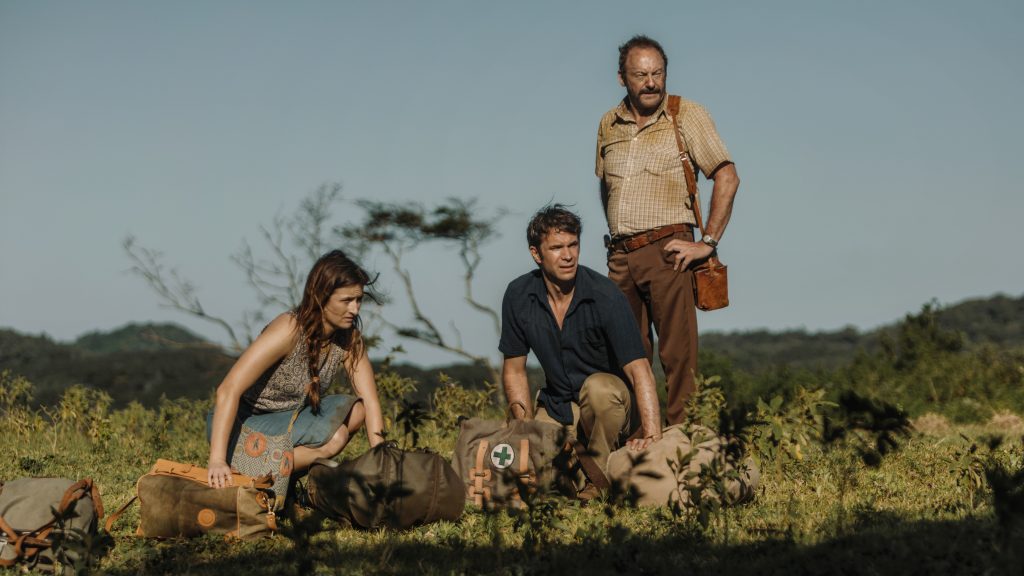A quick interview…
We spoke with Dr. Kimberly Huggins – a biomedical researcher – about some aspects of the show and how true/accurate they may be.
‘The Hot Zone’ introduces us to some really nasty viruses – Are these still real concerns in today’s world?
The viruses in the show are still a real world threat today. Specific to Ebola, we of course had some cases in the US in 2014 which prompted alterations in basic questions asked at medical clinic check-ins, precautions still in effect today. Professionals have known for quite some time that with the interconnectedness of our world, we are always just a few flights away from potential global pandemics. The 2014 outbreak reminded us of that in no uncertain terms.
Based on your experience and education – how accurate was the portrayal of the science and those that work in the USAMRIID?
Hollywood always struggles to create an accurate portrayal of science. One reason is that no matter how important the reagent or reaction, the vast majority of liquids used in science are clear. That doesn’t make for very exciting television or movie experiences so fluids are often colored in interesting ways. The show was pretty accurate in describing the different biosafety levels in labs for each level 1 to 4. Unfortunately, the complacent behavior of some of the scientists regarding their own safety (use of PPE or personal protective equipment) was fairly accurate. In reality, disposable gowns, eye protection, gloves and face shields are always to be worn when working with any primate tissue. I can’t speak to the specifics of USAMRIID procedures having never worked in that environment.
More specific to the viruses: Although I’m not a virologist, Marburg virus does not include large blisters or sores on the body. It does include fever, vomiting, blood loss, and can have a non-itchy rash associated with it.
Would you consider the procedures and equipment used on screen fairly close to how it’s done in real life?
Some of the procedures were fairly close, others were made more exciting for TV. For me, the varied roles of the scientists was glaring. Although in an incident like this, exposure risk needs to be limited, the circle of knowledge should be larger. It is a balance between risking panic and not letting enough people know the risk. Some of these procedures have likely changed as we have become more aware of pandemic and outbreak risks and somewhat better at planning. Even most universities have pandemic planning as part of their overall master plan or strategic plan these days.
Did you notice anything glaringly missing from the show – about the viruses/diseases themselves, the scientific/medical professionals, the procedures in place, etc?
As mentioned there are several oversimplifications to procedures, but one glaringly obvious issue is the lack of PPE for the workers changing the monkey cages. The Hazelton site was a quarantine area for arriving primates. Beyond the super hot agents like, Ebola, monkeys have other diseases and pathogens that can be passed to humans. There are (should) always be more PPE worn. The lack of PPE in those workers would not even be appropriate for a mouse or rat colony. Gloves are worn even there.
What would you say to someone who has watched the first few episodes and now has a real fear about something like Ebola – and the fact that it’s just sitting in a refrigerator somewhere in the US right now?
I would tell them you absolutely want these pathogens to exists in the laboratories in which they are studied. Only through research can we understand the mechanisms of infection, pathways of infection and discover possible treatments or preventative measures. Be thankful that there are scientists willing to engage in these studies.
A giant thanks to Dr. Huggins for taking a few minutes to chat about the science behind the show!
Stay connected with So Many Shows:
More From So Many Shows:
Hanna Season 1 Review (With Spoilers!)
Blood and Treasure Episodes 1 and 2

Leave a Reply